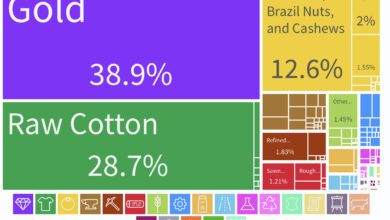4 Ways Technology Revolutionizes Our Lives: From Communication To Automation

Think about this: By the time you finish reading this, over 1000 surgical stitches may have been placed by robotic arms in operating rooms globally. It shows tech’s growing role in changing our lives.
These machines, guided by algorithms and precision, are revolutionizing microsurgery, leaving minimal scars and saving lives. That’s just the tip of where communication and automation intertwine and shape our daily existence. But how so?
This article examines four impactful ways technology revolutionizes our lives, from instant messages when communicating to automation in factories. You will learn how the world progresses — one pixel, one line of code, one heartbeat at a time.
How Technology Revolutionizes Our Lives
1. Safer Workplaces
Before automation, workplaces faced challenges with safety and efficiency. Places like factories had more accidents because people made mistakes and got tired easier. Safety rules were not as good then, so more people got hurt on the job.
An International Labor Organization report found that 2.3 million women and men around the world succumb to work-related accidents or diseases every year. It corresponds to over 6000 deaths every single day.
Fortunately, automation helps safety by introducing systems that can stop or find risks before they happen. Here’s how:
Identity Verification
Identity verification is challenging for many businesses. Issues like identity theft, fraud, and impersonation can lead to fraud losses and data breaches. Traditional methods like documentation and knowledge check prone errors and circumvented.
Fortunately, modern technologies like biometrics, facial recognition, and blockchain have revolutionized secure identity. They use unique traits or cryptographic proofs to create digital identities.
This technology makes identities hard to fake or pretend to be someone else. Now, people and groups can easily identity check someone. They can determine if they are authentic, thus cutting fraud and simplifying identity tasks in a safe, easy way.
Space Exploration
Space exploration has become safer and more advanced through technology. Telescopes like James Webb can look at planets and galaxies far away, helping us learn about where the universe came from and what it’s made of.
Robotic rovers on Mars like Perseverance let us study samples remotely. Reusable rockets from SpaceX are making space travel cheaper. AI helps learn the vast amounts of data found, finding things faster than people alone.
This change in technology allows space exploration to push limits safely and efficiently, thus unlocking secrets once thought impossible.
2. Increased Productivity
The manual work in offices, like data input and paper handling, created scheduling issues in the past: frequent interruptions, misinformation, and lack of transparency hurt productivity.
Organizations can lose up to $1.3 million each year due to inefficiencies. Technology helps work by automating tedious processes, improving teams, and providing solid tools. Automation involves software tasks.
Picture keyboards, phones ringing, and coffee machines hissing. Technology quietly orchestrates communication and efficiency. For example, here’s a closer look at how automation is driving increased productivity:
Energy Management
Smart thermostats adjust temperatures based on occupancy, saving energy. Smart thermostats like Nest and Ecobee utilize sensors and algorithms to adjust temperatures based on occupancy patterns and user preferences.
These devices optimize energy usage by intelligently regulating heating and cooling systems, leading to significant cost savings and reduced environmental impact.
Collaboration Tools
Zoom, Microsoft Teams, and Google Meet allow people across multiple locations to communicate seamlessly through video conferences, share screens, and collaborate in real time. Doctors can virtually “beam” into patient rooms using telepresence robots to provide remote consultations.
Moreover, global teams can seamlessly collaborate on projects by meeting face-to-face and online. Tools like Asana, Trello, and Jira allow teams to create plans, assign tasks with due dates, and track progress in one place.
Reminders notify members of deadlines and reduce emails. File sharing, comments, and communication keep everyone coordinated. Reporting dashboards show leadership how projects are going and possible problems.
3. More Accurate Microsurgery
Surgery before the technological revolution was fraught with challenges, and outcomes could have been more predictable. Modern technology, including robotics, has revolutionized surgical practice, enhancing precision, safety, and patient outcomes.
Robotic microsurgery is on the rise, improving outcomes and minimizing scarring. In the peaceful confines of an operating theater, where precision is paramount, technology wields a scalpel sharper than any human hand.
For example, here’s how it transforms the delicate dance of microsurgery:
Robotic Surgeons
Robotic surgical systems allow exact cuts and movements. An example is the da Vinci Surgical System – a robotic-assisted surgical platform. Their arms let surgeons operate precisely.
The da Vinci system allows surgeons to perform complex procedures with precision. This technology has changed surgeries.
Robotic assistance expands possibilities for minimally invasive, precise techniques. It pleads to less trauma, faster recovery, and better results for complex surgeries.
4. Saving Lives in Hospitals
Before technology revolutionized lives, there were challenges — these included medication errors due to human mistakes and slow emergency response.
Automation and digital systems improved safety, efficiency, and care. Communication between patients and providers builds trust. If patients feel heard, they follow plans and advice better.
Hospitals also use improved communication and automation through robots to deliver food and medicine. In medical facilities, where moments matter, technology joins the effort.
Here’s how it silently saves lives:
Reducing Errors and Improving Safety
Clear communication is crucial. It ensures providers access accurate, up-to-date patient data. For example, Electronic Health Records (EHRs) centralize information, thus helping reduce medical errors.
E-prescribing systems also digitize prescriptions. Doing so minimizes mistakes from illegible handwriting and enhances medication safety.
Moreover, secure messaging platforms enable efficient care teams. It coordinates through technology, thus improving patient safety and quality of care.
Quicker Response Times
Seconds matter during emergencies, and automation and communication accelerate critical interventions. A robotic emergency platform can deliver a defibrillator to a patient’s bedside in 15 to 20 seconds following an alert, saving 5 minutes over human staff.
In an actual emergency, quick action matters. For instance, Sean Hitchcock suffered a heart attack in a waiting room.
Dr Elise M. Carlson and staff from medical offices promptly performed CPR using an AED. Those crucial first few minutes can mean the difference between life and death.
Conclusion
Technology is revolutionizing how we talk, work, and live every day. From instant messaging to automated processes, the impact of technology revolutionizes our world in unprecedented ways. Technology plays a huge role in shaping our future.
Also, technology transforms the way we interact. Embracing these advancements increases your efficiency, convenience, and connectivity. It changes your future. So, are you ready to incorporate them into your life and business?




